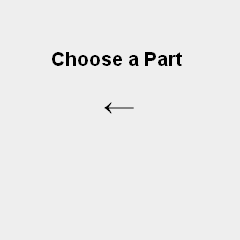Current Part:

PICKit Programmer
[2] LM317 Variable Voltage Regulator
[2] 1mW XBee Modules
[2] 3v or 6v DC Motors
SN754410NE Motor Controller IC
[2] 2N2222 NPN Transistor
[2] 20 MHz Crystal
[8] 10kΩ Resistor
[4] 100Ω Resistor
[4] 5kΩ Trimpots
[2] 10uF Capacitor
[4] 100uF Capacitor
[2] 5mm LED
[2] Breadboard
Breadboard Wire
SIPs
[2] 9v Connector
[2] Battery Holder
Parts List Details
To make things more clear, I'll describe the more important parts from the list above, in detail below. This way there's no confusion about what it's role in this project is.
PIC 18LF4520
Two PIC 18LF4520 microcontrollers will be used in this project, one for the transmitter side and one for the receiver side. The LF version of the PIC means low power, so it can run off of the +3.3v power supply.
XBee Wireless Modules
Two XBee modules will be used to create the wireless link of the transmitter and receiver. These are simple 1mW modules that don't cost very much and are packed with unique functionality.
SN754410NE Motor Controller
This is a cheap IC motor controller. It has enable lines for each section of the h-bridge and 4 PWM inputs.
PICKit Programmer
The 6 pin programming header will conform to the ICSP header standard so that we can use a PICKit2 or PICKit3 to program the PIC.
LM317 Variable Voltage Regulator
The power supply for the PIC and XBee will be +3.3v so we will use an LM317 variable voltage regulator with a resistor and trimpot to output a controlled +3.3v.
20 MHz Crystal
The two microcontrollers will use the same crysta clock speed to make things easier. You can use a different crystal speed, but you need to make sure the USART baud rate is 9600 BPS to be compatible with a default XBee module.
2N2222 Transistor
Two NPN 2N2222 transistors will be used to invert the PWM signal from the PIC and then input as a pair to the SN754410NE motor controller IC.
Breadboard and Jumper Wire
Two breadboards of standard size will be used, these are about $10 off the shelf and make for a very flexible testing platform. Standard jumper wire will be used to connect the whole circuit together.